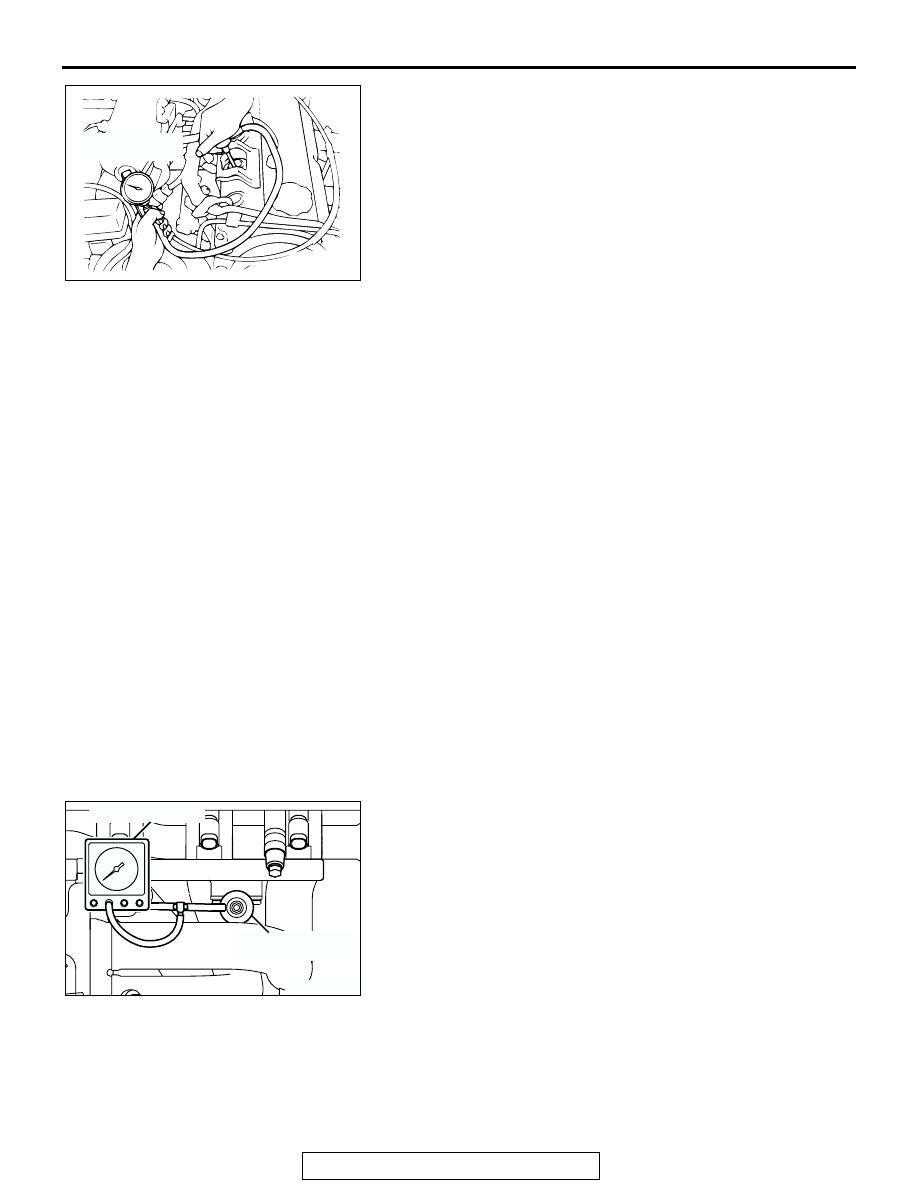Mitsubishi Eclipse. Manual - part 104

ON-VEHICLE SERVICE
TSB Revision
ENGINE MECHANICAL <2.4L>
11A-11
6. Set compression gauge to one of the spark plug holes.
7. Crank the engine with the throttle valve fully open and
measure the compression pressure.
Standard value (at engine speed of 250
− 400 r/min):
1,275 kPa (185 psi)
Minimum limit (at engine speed of 250
− 400 r/min):
959 kPa (139 psi)
8. Measure the compression pressure for all the cylinders, and
check that the pressure differences of the cylinders are
below the limit.
Limit: 98 kPa (14 psi)
9. If there is a cylinder with compression or a compression
difference that is outside the limit, pour a small amount of
engine oil through the spark plug hole, and repeat the
operations in steps 6 to 8.
(1) If the compression increases after oil is added, the cause
of the malfunction is a worn or damaged piston ring
and/or cylinder inner surface.
(2) If the compression does not rise after oil is added, the
cause is a burnt or defective valve seat, or pressure is
leaking from the gasket.
10.Connect the crankshaft position sensor connector.
11.Install the spark plugs and spark plug cables.
12.Use the scan tool to erase the diagnostic trouble codes.
NOTE: This will erase the diagnostic trouble code resulting
from the crankshaft position sensor connector being discon-
nected.
MANIFOLD VACUUM CHECK
M1111002700439
1. Start the engine and allow it to warm up until the
temperature of the engine coolant reaches 80
− 95°C (176 −
203
°F).
2. Connect an engine tachometer.
3. Attach a tee-fitting union to the vacuum hose between the
fuel pressure regulator and the intake manifold plenum, and
connect a vacuum gauge.
4. Start the engine and check that idle speed is within
specification. Then check the vacuum gauge reading.
Idle speed: 700
± 100 r/min
Minimum limit: 60 kPa (18 in Hg)
AKX01178
COMPRESSION
GAUGE
AB
AK300678 AB
VACUUM GAUGE
FUEL PRESSURE
REGULATOR